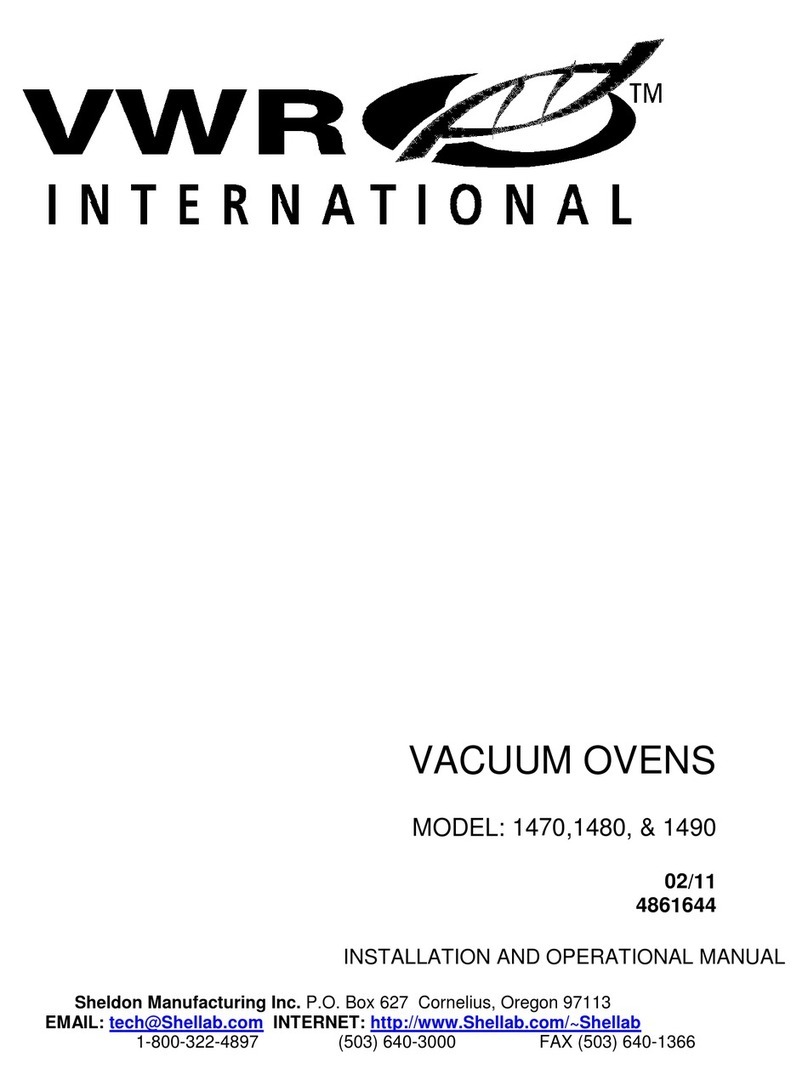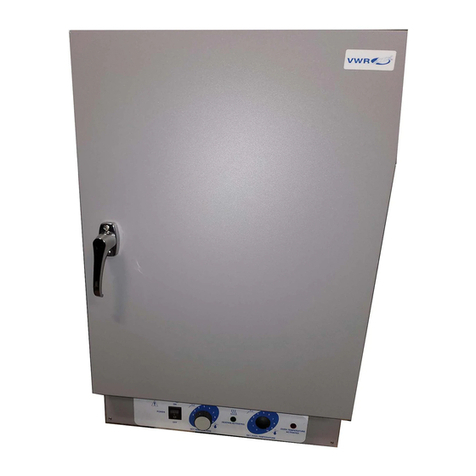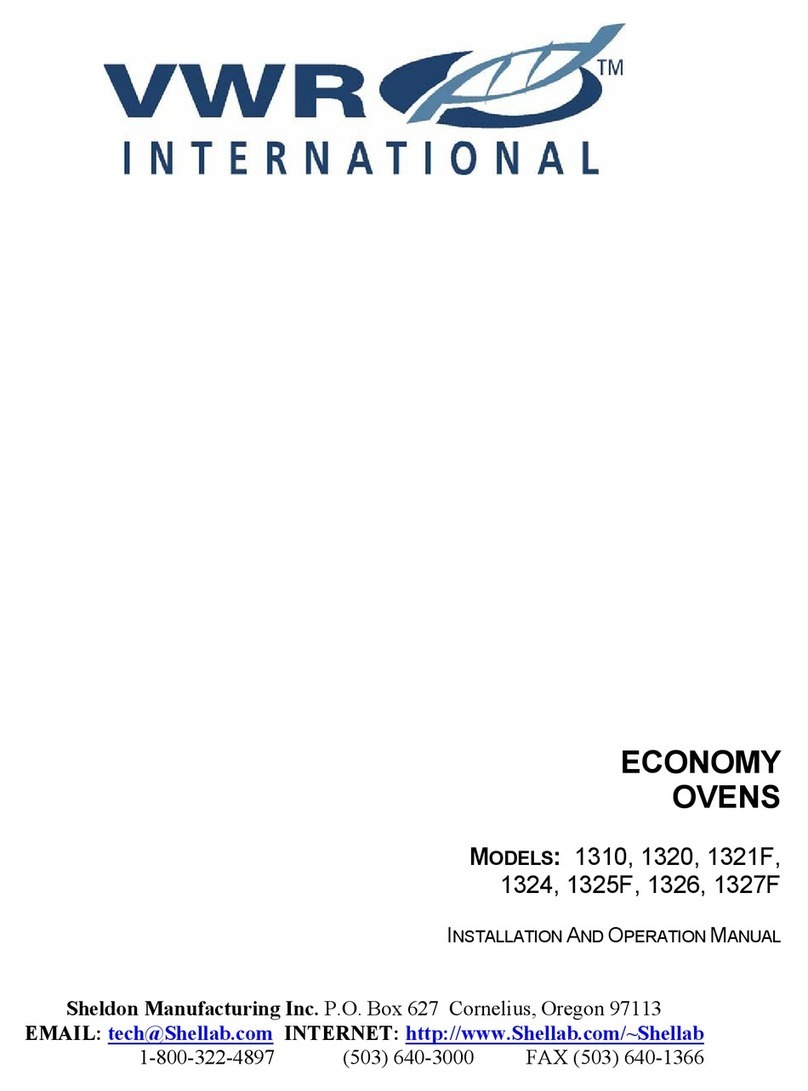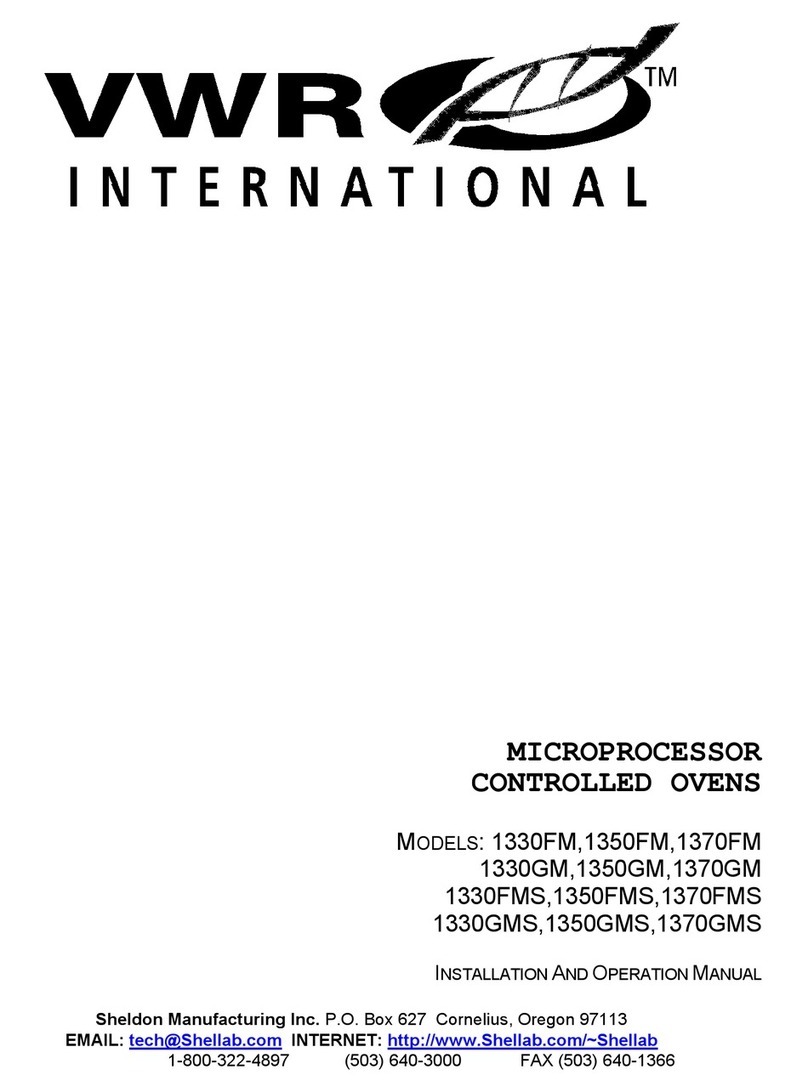Vacuum Oven ivVWR Collection
Table of Contents
Description . . . . . . . . . . . . . . . . . . . . . . . . . . . . . . . . . . . . . . . . . . . . . . . . . .1-1
Safety Information . . . . . . . . . . . . . . . . . . . . . . . . . . . . . . . . . . . . . . . . . . . .2-1
Specifications . . . . . . . . . . . . . . . . . . . . . . . . . . . . . . . . . . . . . . . . . . . . . . .3-1
Unpacking and Installation . . . . . . . . . . . . . . . . . . . . . . . . . . . . . . . . . . . .4-1
Location . . . . . . . . . . . . . . . . . . . . . . . . . . . . . . . . . . . . . . . . . . . . . . .4-1
Hose Connections . . . . . . . . . . . . . . . . . . . . . . . . . . . . . . . . . . . . . . .4-1
Thermometer . . . . . . . . . . . . . . . . . . . . . . . . . . . . . . . . . . . . . . . . . . .4-2
Electrical Requirements . . . . . . . . . . . . . . . . . . . . . . . . . . . . . . . . . . .4-2
Control Panel . . . . . . . . . . . . . . . . . . . . . . . . . . . . . . . . . . . . . . . . . . .5-1
Features . . . . . . . . . . . . . . . . . . . . . . . . . . . . . . . . . . . . . . . . . . . . . . . . . . . . .5-1
Operation . . . . . . . . . . . . . . . . . . . . . . . . . . . . . . . . . . . . . . . . . . . . . . . . . . . .6-1
Temperature Control . . . . . . . . . . . . . . . . . . . . . . . . . . . . . . . . . . . . .6-1
Loading the Oven . . . . . . . . . . . . . . . . . . . . . . . . . . . . . . . . . . . . . . .6-1
Unloading the Oven . . . . . . . . . . . . . . . . . . . . . . . . . . . . . . . . . . . . .6-2
Purging the Chamber with Inert Gas . . . . . . . . . . . . . . . . . . . . . . . . .6-2
Releasing the Vacuum . . . . . . . . . . . . . . . . . . . . . . . . . . . . . . . . . . . .6-2
Maintaining Proper Vacuum Level . . . . . . . . . . . . . . . . . . . . . . . . . . .6-2
Routine Cleaning . . . . . . . . . . . . . . . . . . . . . . . . . . . . . . . . . . . . . . . .7-1
Maintenance . . . . . . . . . . . . . . . . . . . . . . . . . . . . . . . . . . . . . . . . . . . . . . . .7-1
Care and Cleaning of Stainless Steel . . . . . . . . . . . . . . . . . . . . . . . . . .7-2
The pH Factor . . . . . . . . . . . . . . . . . . . . . . . . . . . . . . . . . . . . . . . .7-2
Guidelines . . . . . . . . . . . . . . . . . . . . . . . . . . . . . . . . . . . . . . . . . . . .7-2
Cleansing Agents . . . . . . . . . . . . . . . . . . . . . . . . . . . . . . . . . . . . . . . .7-3
Special Considerations . . . . . . . . . . . . . . . . . . . . . . . . . . . . . . . . . . . .7-3
Cleaning Methods . . . . . . . . . . . . . . . . . . . . . . . . . . . . . . . . . . . . . . .7-4
Disinfection . . . . . . . . . . . . . . . . . . . . . . . . . . . . . . . . . . . . . . . . . .7-5
Door Gasket Lubrication . . . . . . . . . . . . . . . . . . . . . . . . . . . . . . . . . .7-5
Troubleshooting . . . . . . . . . . . . . . . . . . . . . . . . . . . . . . . . . . . . . . . . . . . . . .8-1
Section 1
Section 2
Section 3
Section 4
Section 5
Section 6
Section 8
Section 7


































